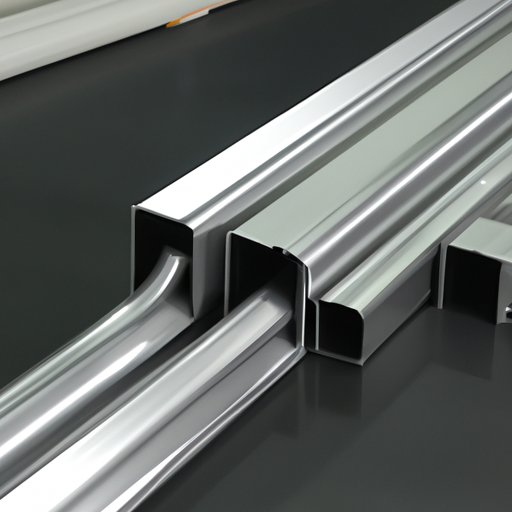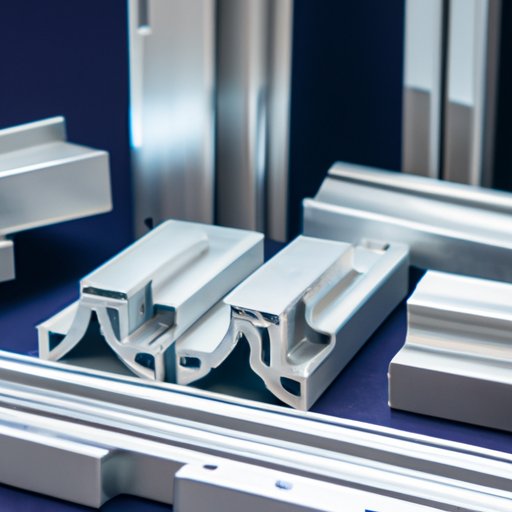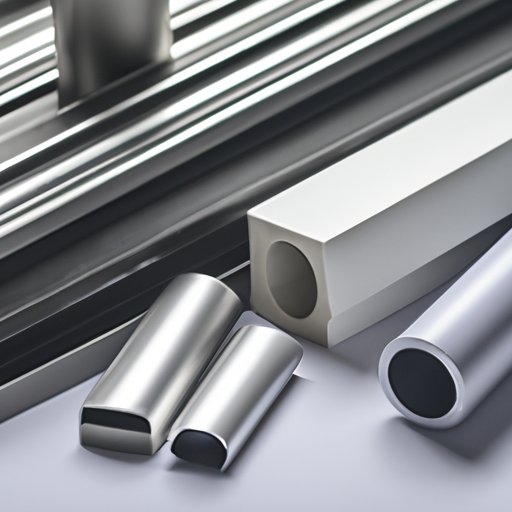Content Menu
● What Are The Key Steps in The Aluminum Extrusion Process?
● Understanding Aluminum Extrusion
>> Benefits of Aluminum Extrusion
● Key Steps in the Aluminum Extrusion Process
>> 1. Material Selection
>> 2. Billet Preparation
>> 3. Heating the Billet
>> 4. Extrusion Process
>> 5. Cooling
>> 6. Stretching
>> 7. Cutting
>> 8. Surface Treatment
>> 9. Quality Control
>> 10. Packaging and Shipping
● Applications of Aluminum Extrusion
● Conclusion
● Frequently Asked Questions
>> 1. What is aluminum extrusion?
>> 2. What are the benefits of aluminum extrusion?
>> 3. What types of aluminum alloys are commonly used for extrusion?
>> 4. How is the aluminum billet prepared for extrusion?
>> 5. What surface treatments can be applied to extruded aluminum?
What Are The Key Steps in The Aluminum Extrusion Process?
Aluminum extrusion is a manufacturing process that transforms aluminum alloy into a desired cross-sectional shape. This process is widely used in various industries due to its versatility, efficiency, and the lightweight nature of aluminum. In this article, we will explore the key steps involved in the aluminum extrusion process, providing a comprehensive understanding of how this technique works and its applications.

Understanding Aluminum Extrusion
Before diving into the steps, it's essential to understand what aluminum extrusion is. The process involves forcing aluminum alloy through a die to create a specific shape. The resulting product, known as an extrusion, can be used in various applications, from construction to automotive parts.
Benefits of Aluminum Extrusion
Aluminum extrusion offers several advantages, including:
- Lightweight: Aluminum is significantly lighter than other metals, making it ideal for applications where weight is a concern.
- Strength: Despite its lightness, aluminum has a high strength-to-weight ratio.
- Corrosion Resistance: Aluminum naturally forms a protective oxide layer, making it resistant to corrosion.
- Versatility: The extrusion process allows for a wide range of shapes and sizes, accommodating various design needs.
- Cost-Effectiveness: The efficiency of the extrusion process can lead to lower production costs, especially for large volumes.
Key Steps in the Aluminum Extrusion Process
1. Material Selection
The first step in the aluminum extrusion process is selecting the appropriate aluminum alloy. Different alloys have varying properties, such as strength, corrosion resistance, and workability. Commonly used alloys for extrusion include 6061, 6063, and 7075, each suited for specific applications. For instance, 6061 is often used in structural applications due to its excellent mechanical properties, while 6063 is favored for architectural applications due to its aesthetic finish.
2. Billet Preparation
Once the alloy is selected, the next step is to prepare the aluminum billet. A billet is a solid piece of aluminum that will be heated and extruded. The billets are typically cut to length and may undergo a heating process to make them more malleable. The heating temperature usually ranges between 400°F to 900°F, depending on the alloy being used. Proper billet preparation is crucial, as it affects the quality of the final extrusion.
3. Heating the Billet
The prepared billet is then placed in a furnace where it is heated to the desired temperature. This heating process is crucial as it softens the aluminum, making it easier to extrude. The heating time and temperature are carefully controlled to ensure uniform heating throughout the billet. Inconsistent heating can lead to defects in the extruded product, such as cracks or uneven surfaces.
4. Extrusion Process
After heating, the billet is transferred to the extrusion press. The extrusion press consists of a container, a ram, and a die. The heated billet is placed in the container, and the ram pushes it through the die. The die determines the shape of the final product. The extrusion process can be done using two main methods: direct extrusion and indirect extrusion. In direct extrusion, the ram pushes the billet directly through the die, while in indirect extrusion, the die moves towards the billet.

5. Cooling
Once the aluminum has been extruded through the die, it is cooled to solidify the shape. Cooling can be done using air or water, depending on the desired properties of the final product. Rapid cooling can enhance the strength of the aluminum, while slower cooling may be used for more complex shapes. The cooling process is critical, as it affects the mechanical properties of the extruded aluminum.
6. Stretching
After cooling, the extruded aluminum may be slightly distorted. To correct this, the extrusions are stretched to ensure they meet the specified dimensions. Stretching also helps to relieve internal stresses that may have developed during the extrusion process. This step is essential for maintaining the integrity and dimensional accuracy of the final product.
7. Cutting
Once the extrusions are stretched, they are cut to the desired lengths. This cutting can be done using saws or other cutting tools, depending on the size and shape of the extrusions. Precision in cutting is vital to ensure that the extrusions meet the required specifications for their intended applications.
8. Surface Treatment
To enhance the appearance and durability of the extruded aluminum, surface treatments may be applied. Common treatments include anodizing, painting, and powder coating. Anodizing creates a protective oxide layer, while painting and powder coating provide color and additional protection against corrosion. Surface treatment not only improves aesthetics but also increases the lifespan of the aluminum products.
9. Quality Control
Quality control is a critical step in the aluminum extrusion process. Each batch of extrusions is inspected for dimensional accuracy, surface finish, and mechanical properties. This ensures that the final products meet the required specifications and standards. Advanced techniques such as non-destructive testing may be employed to detect any internal defects in the extrusions.
10. Packaging and Shipping
Once the extrusions pass quality control, they are packaged for shipping. Proper packaging is essential to prevent damage during transportation. The extrusions are often bundled and wrapped to ensure they arrive at their destination in perfect condition. Efficient logistics and handling are crucial to maintaining the quality of the extruded products.
Applications of Aluminum Extrusion
Aluminum extrusions are used in a wide range of applications, including:
- Construction: Window frames, doors, and structural components.
- Automotive: Lightweight parts that improve fuel efficiency, such as chassis components and heat exchangers.
- Aerospace: Components that require high strength-to-weight ratios, including aircraft frames and wing structures.
- Electronics: Heat sinks and enclosures for electronic devices, ensuring efficient heat dissipation.
- Consumer Products: Furniture, appliances, and sporting goods that benefit from aluminum's lightweight and durable properties.
Conclusion
The aluminum extrusion process is a vital manufacturing technique that offers numerous benefits across various industries. By understanding the key steps involved, manufacturers can optimize their processes and produce high-quality aluminum products. From material selection to quality control, each step plays a crucial role in ensuring the final product meets the desired specifications. As industries continue to seek lightweight and durable materials, aluminum extrusion will remain a key player in modern manufacturing.

Frequently Asked Questions
1. What is aluminum extrusion?
Aluminum extrusion is a manufacturing process that involves forcing aluminum alloy through a die to create a specific cross-sectional shape.
2. What are the benefits of aluminum extrusion?
The benefits include lightweight, high strength, corrosion resistance, versatility in design, and cost-effectiveness.
3. What types of aluminum alloys are commonly used for extrusion?
Common alloys include 6061, 6063, and 7075, each suited for different applications based on their mechanical properties.
4. How is the aluminum billet prepared for extrusion?
The billet is cut to length and heated to make it more malleable before being placed in the extrusion press.
5. What surface treatments can be applied to extruded aluminum?
Common treatments include anodizing, painting, and powder coating to enhance appearance and durability.






















